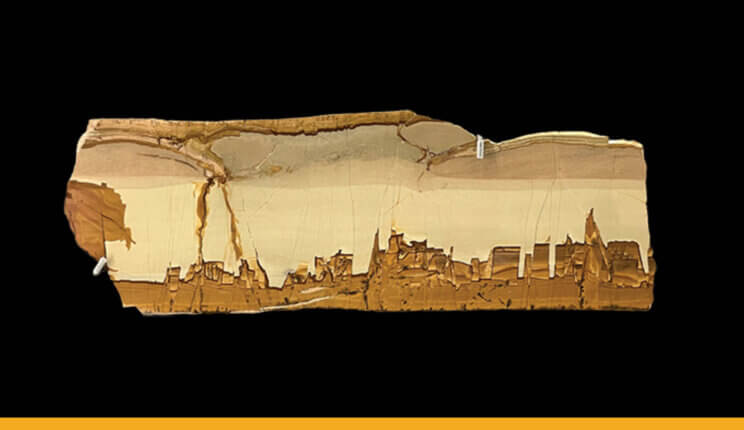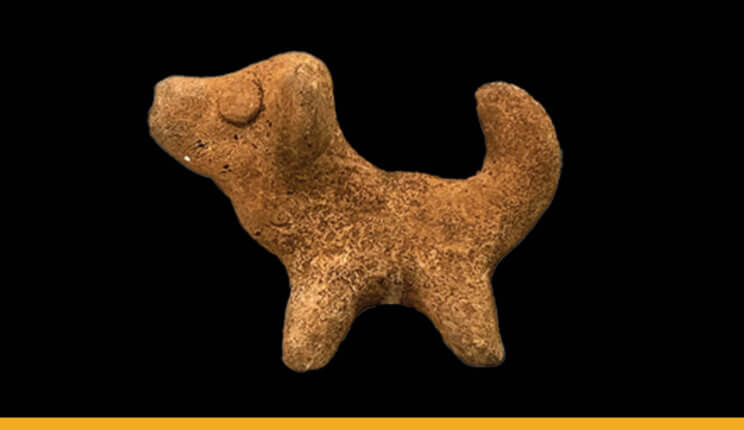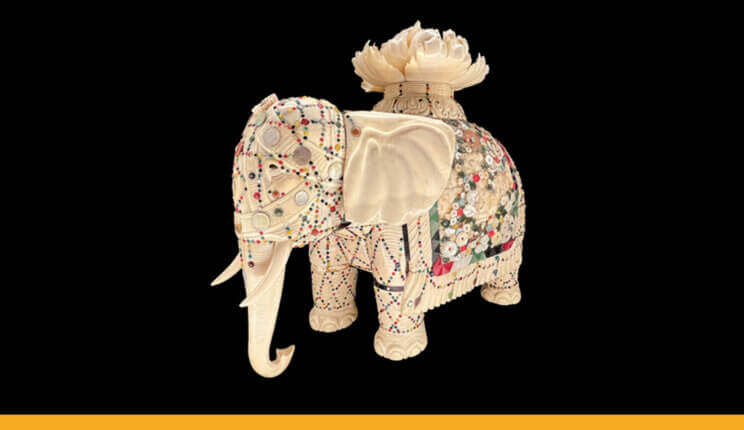
INSIDE THE VAULT
NEW PLANETARIUM TUNNEL EXHIBIT
Don’t Miss These Hidden Treasures from Inside the Vault
Have you seen Inside the Vault? Come take a peek at treasures from inside the Science Center’s Collections in the largest display of Collections items in the Saint Louis Science Center’s 30-year history.
We spoke with Kristina Hampton, manager of collections and special projects, to find out which of these exciting artifacts you won’t want to miss seeing in person.
Curious to see more? Come to Inside the Vault, a free exhibit located inside the Planetarium tunnel. Learn more at slsc.org/inside-the-vault.

Mineral Collection: Jasper (Marble Ruin)
Collected: Florence, Italy | Formation: Metamorphic
In the mountain areas of Italy around the city of Florence, a rare kind of limestone is found called “Florentine marble.” Discovered in the 16th century, the natural veins of impurities within the limestone have formed jasper and arranged themselves in shapes resembling mountainous landscapes, castles, and ruins. For this reason, the jasper is also known by various names such as “marble ruin” and “landscape marble.”
“Because the patterns on the jasper are random,” Hampton says, “the likelihood of discovering one where the formation looks like a ruined city is pure chance. The pattern is hidden inside the limestone rock that formed around it and cannot be seen until broken open. What is great about this particular specimen is that the formation looks a bit like the of city of St. Louis, complete with the Arch!”

Lighting Collection: Ship Whale Oil Lamp
Double-channel pan, brass | American, ca. 1850 AD
Did you know that inside a ship, lamps were often mounted on gimbals so they could pivot and stay upright in rolling seas? This was important to keep lamp oils from spilling and to ensure the lamp stayed lit. The gimbal was designed so the wick always pointed upwards no matter how rough the ocean was. First invented in Greece around 200 BC, gimbals were applied for use with ship lanterns by the 1500s.
“Sailing was a dangerous occupation, and fire was the greatest danger of all for early wooden sailing ships,” says Hampton. “However, lighting onboard with candles or oil lanterns was necessary. Development of gimbal lamps decreased the potential threat of fire from that source. The best lamps were made of copper and pewter, but many were made of brass like this one, tin, or tin-plated iron.”

Davis Collection of Miniatures: Terracotta Dog Shaped Whistle
Colima culture, Colima, West Mexico | ca. 300 BC
In nearly every world culture, dogs were the first domesticated animals. For the past 3,000 years, the Colima Dog has been the animal most frequently portrayed in Western Mexican art. A relative of the Mexican Hairless dog, it was highly regarded among ancient cultures like the Colima as a guardian of the dead, healer of the sick, protector of the home, and as a food source for ceremonial feasts.
“The Colima made a distinct style of terracotta figurines that depicted daily life,” Hampton notes, “and as an important animal, dogs were a common subject. A large portion of Colima tombs had actual dogs, dog-shaped vessels, or dog-shaped whistles like this one buried with the deceased.”

Elephant Collection: Carving
Ivory, mother of pearl and gems inlay
Japan, Meiji Era, ca. 1868 – 1912 AD
In Buddhism the white elephant is revered as a divine women and seen as an earthly manifestation of the qualities embodied in the Buddha. It is also closely tied to the story of the Buddha’s birth. In a dream, the Buddha’s mother Queen Maya saw a pure white elephant circle her three times while holding a white lotus flower in its trunk. The elephant blessed her womb from the right side, then disappeared. The queen knew she had been sent a divine omen that greatness would soon be born.
“This stunning elephant carving employs the art form known as Shibayama, the inlay of a design into an ivory base using carved natural materials of varying textures and colors,” Hampton says. “On the elephant’s back is a lotus flower, symbolizing the heart and mind’s ultimate purity.”





